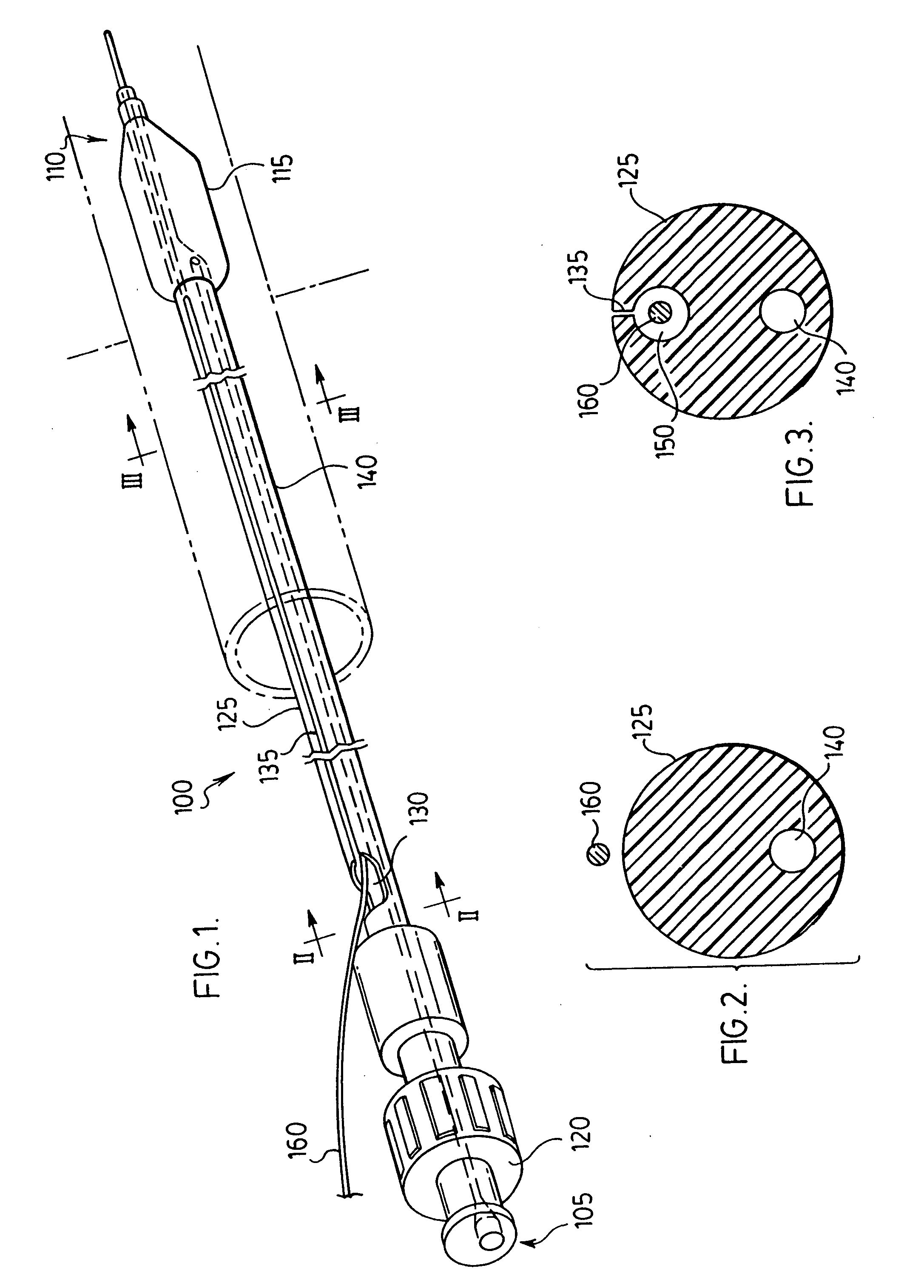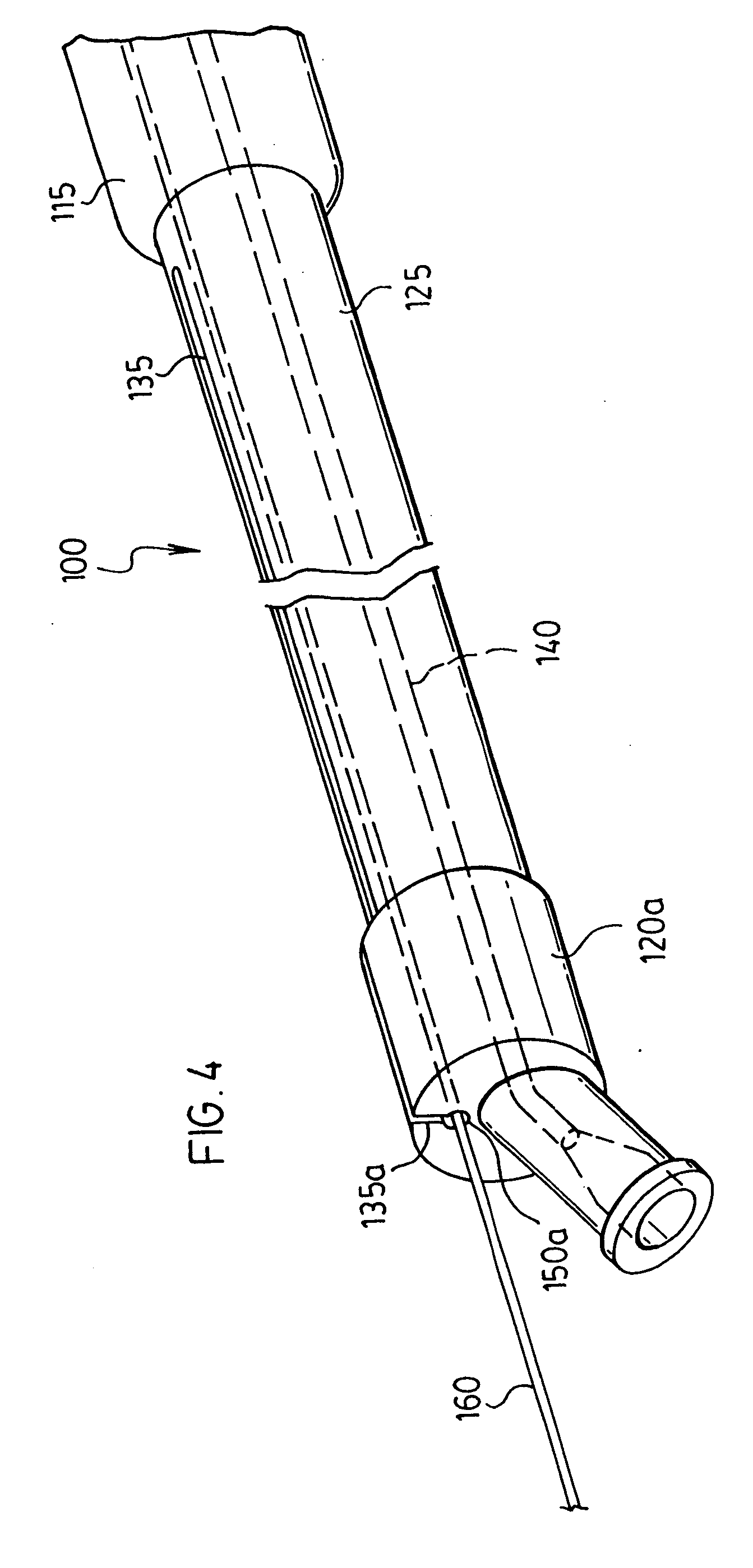Stent delivery system and method of use
a balloon dilation catheter and delivery system technology, applied in the field of balloon dilation catheters, can solve the problems of less than optimum steerability of the guidewire, difficulty in moving the guidewire with respect to the catheter, less than optimum torque control, etc., and achieve the effect of mitigating back bleeding
- Summary
- Abstract
- Description
- Claims
- Application Information
AI Technical Summary
Benefits of technology
Problems solved by technology
Method used
Image
Examples
Embodiment Construction
[0067] Thus, with reference to FIGS. 1-3, there is illustrated a balloon dilation catheter 100. Balloon dilation catheter 100 comprises a proximal end 105 and a distal end 110. Distal end 110 of balloon dilation catheter 100 comprises an expandable balloon 115. Proximal end 105 of balloon dilation catheter 100 comprises an single lumen Luer-type adaptor 120. Disposed between adaptor 120 and balloon 115 is a tubular member 125.
[0068] As will be apparent from FIG. 1, disposed in tubular member 125 is an opening 130. Also disposed in tubular member 125 is a slit 135 which extends from opening 130 to a point in tubular member 125 just proximal balloon 115.
[0069] With particular reference to FIGS. 2 and 3, tubular member 125 comprises a first lumen 140 and a second lumen 150. First lumen 140 is designed to be in communication with an interior of balloon 115. The design of the interface between balloon 115 and first lumen 140 is conventional—see for example Horzewski referred to hereina...
PUM
 Login to View More
Login to View More Abstract
Description
Claims
Application Information
 Login to View More
Login to View More - R&D
- Intellectual Property
- Life Sciences
- Materials
- Tech Scout
- Unparalleled Data Quality
- Higher Quality Content
- 60% Fewer Hallucinations
Browse by: Latest US Patents, China's latest patents, Technical Efficacy Thesaurus, Application Domain, Technology Topic, Popular Technical Reports.
© 2025 PatSnap. All rights reserved.Legal|Privacy policy|Modern Slavery Act Transparency Statement|Sitemap|About US| Contact US: help@patsnap.com



